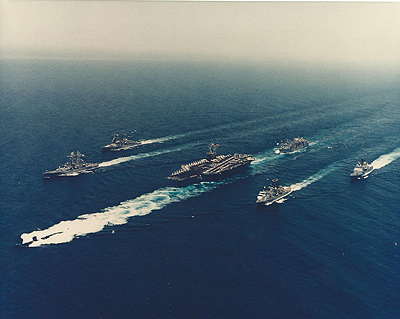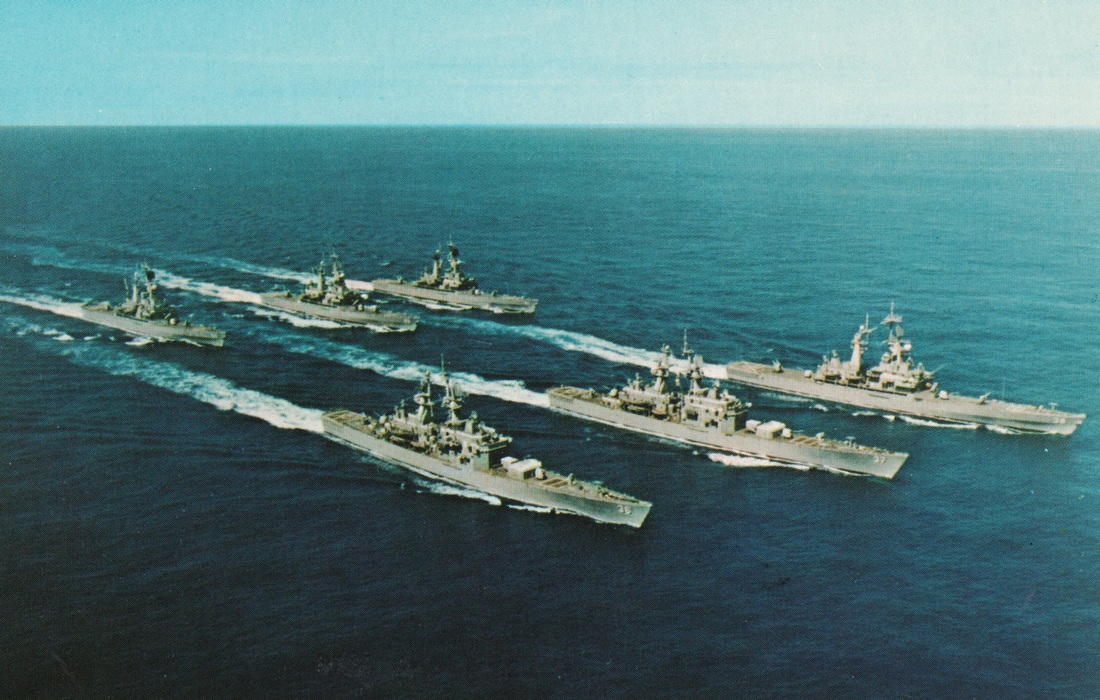

USS Missouri decommissioned in March 1992 and was placed in Reserve at Bremerton, Washington.

Her subsequent operations were in the Pacific, including another visit to Australia and participation in December 1991 ceremonies at Pearl Harbor remembering the fiftieth anniversary of the Japanese attack there. Missouri again went to the Persian Gulf in January 1991 and actively participated in the War with Iraq in January and February.


In 1987, Missouri deployed to the Persian Gulf area and spent the following three years in exercises in the Pacific. USS Missouri (BB 63) began her new life with an around-the-world cruise, the first such cruise for a battleship since the Great White Fleet sailed in 1907. Turret Two remained unrepaired when she decommissioned in Norfolk, Va., for the last time 26 October 1990. On 19 April 1989, an explosion of undetermined cause ripped through her Number Two sixteen-inch gun turret killing 47 crewmen. She went to European waters in 1985, 19 through 1988, with the latter cruise continuing into the Indian Ocean and Arabian Sea. USS Iowa participated in operations in the Caribbean and the North Atlantic. Iowa was in inactive service twice as long as it was in active service (36 years, 9 months, compared to 18 years, 11 months). The Navy spent about $1.7 billion to modernize and reactivate the four Iowa class battleships.Īfter two and a half decades in "mothballs", Iowa was modernized under the 1980s defense buildup and recommissioned 28 April 1984. USS Missouri (BB 63) was recommissioned and USS Wisconsin (BB 64) was recommissioned October 22, 1988. USS Iowa (BB 61) was recommissioned April 8, 1984. This ship, USS New Jersey (BB 62), was commissioned for the third time on December 28, 1982. Additionally, the cost to reactivate and modernize a battleship is about that of a modern guided missile frigate.Ĭongress directed the reactivation and modernization of the first Iowa-class battleship in the summer of 1981. No smaller ship can sustain a comparable level of offensive efforts in terms of volume, weight and duration of firepower and in terms of both guns and cruise missiles, and survivability.
#Battle group navy plus
These powerful, flexible capital ships increased the Navy's ability to provide an important new capability in maritime power, plus much-needed flexibility in carrier deployment schedules. They were activated briefly to help the Navy correct a shortage in major fleet deployment elements that developed during the 1970s and 1980s. In areas of reduced anti-air warfare threat, they were capable of surface action group and battle group operations, centered on the battleships, with appropriate anti-submarine and anti-air warfare escort ships.Īll four Iowa-class battleships authorized for reactivation during the early 1980s have been de-commissioned. They operated as an element of a carrier battle group or amphibious group. Battleships were tasked to conduct prompt and sustained combat operations at sea, worldwide, in support of national interests.


 0 kommentar(er)
0 kommentar(er)
